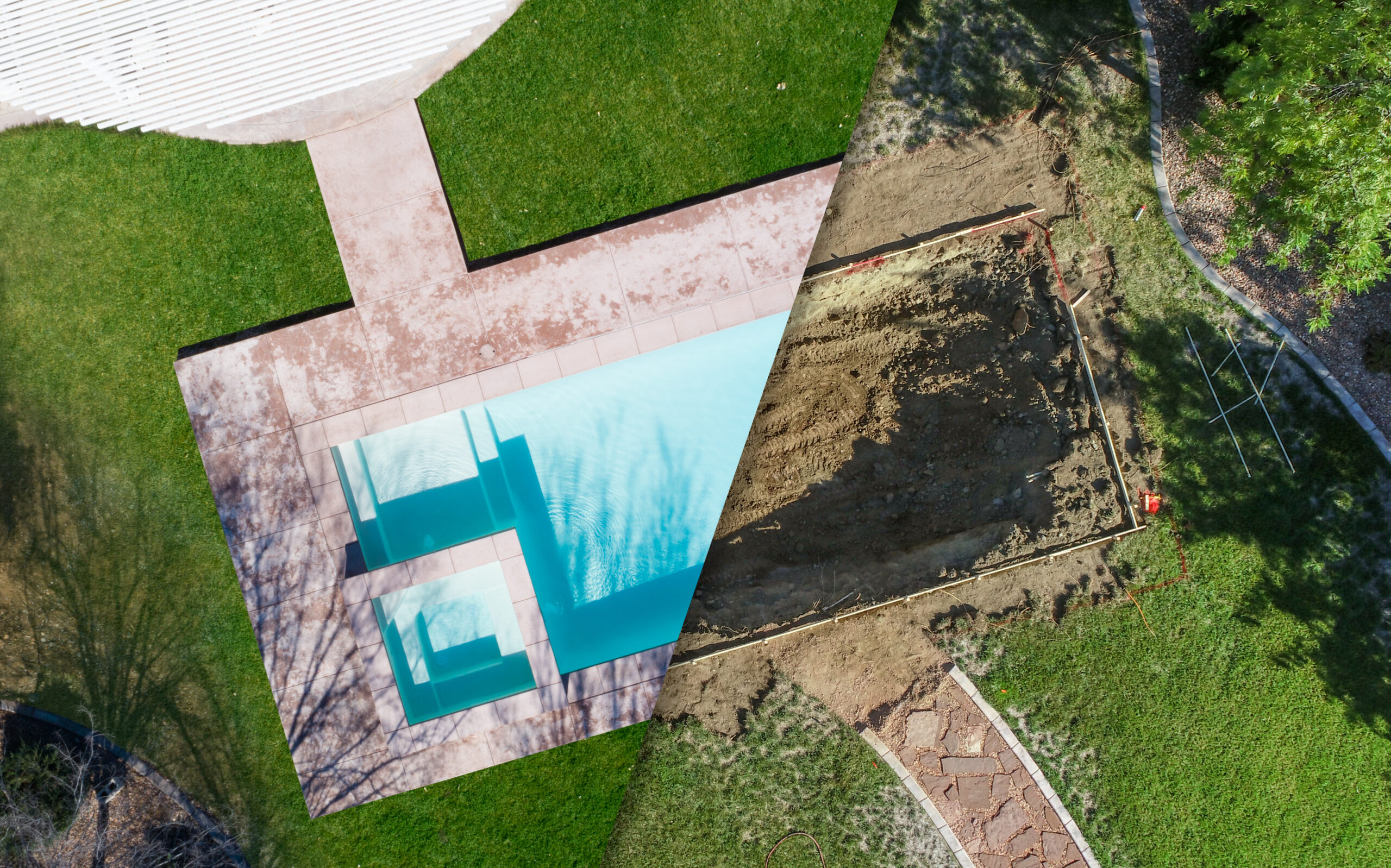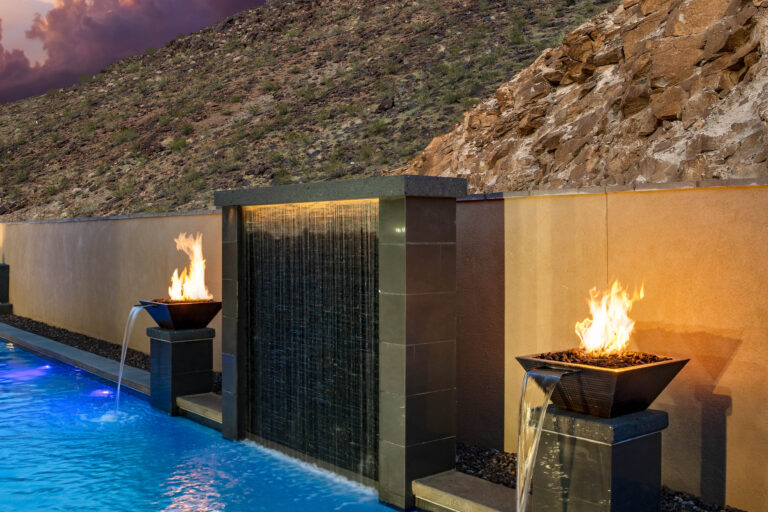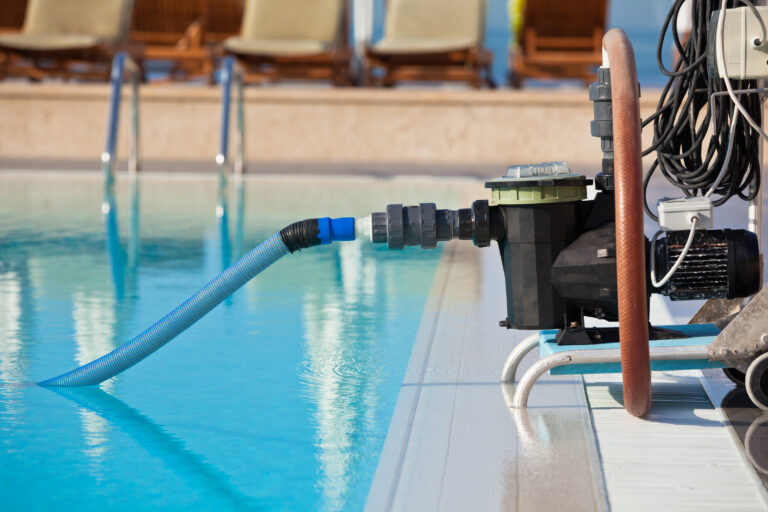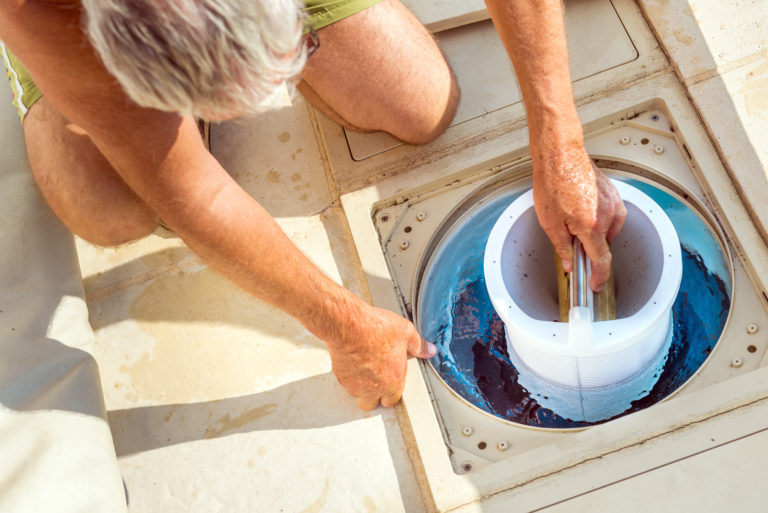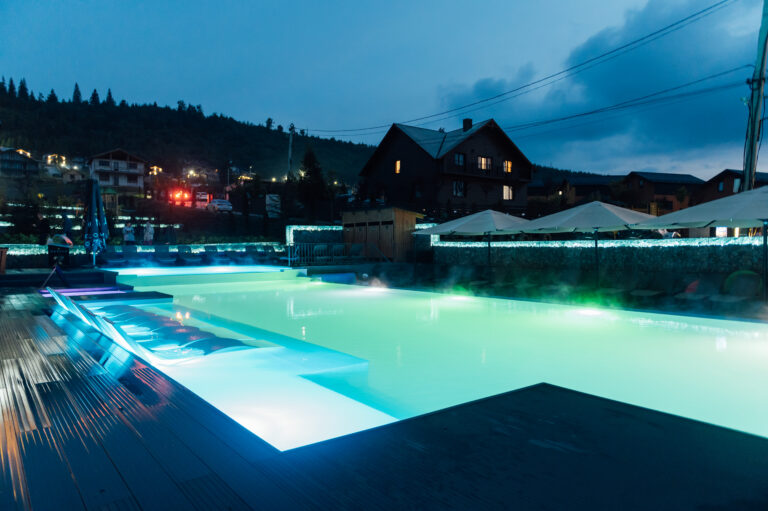From Vision to Reality The Pool Construction Process
You’ve decided to take the plunge and build your dream pool. But where do you start? Don’t worry, we’re here to help guide you through the process, from initial vision to final reality.
We’ll cover everything from choosing a design, planning stages, installation, and even maintenance tips.
So sit back, relax and let’s dive into the exciting world of pool construction!
Understanding Your Pool Vision
It’s crucial to clearly understand your pool vision before starting the construction process. You’ve got to be able to visualize what you want, and then translate that vision into a tangible, workable plan. Think of it like this: your vision is the blueprint, and the construction process is how you turn that blueprint into reality.
Now, where can you find pool inspirations? There are plenty of resources available for you to tap into. Magazines, websites, and even social media platforms can offer a treasure trove of ideas for your perfect pool. Take note of aspects that catch your eye – the shape, size or maybe unique features like waterfalls or infinity edges.
But remember – translating those inspirations into a realistic vision isn’t always straightforward. It’s not just about copying something you liked; it’s about making sure it fits with your property’s layout and conditions too. What works for one site might not work for another.
So take time to understand your pool vision fully. Sketch out ideas, gather inspiration from various sources and consider how best they fit within your space constraints. This careful planning will pave the way for smoother construction later on!
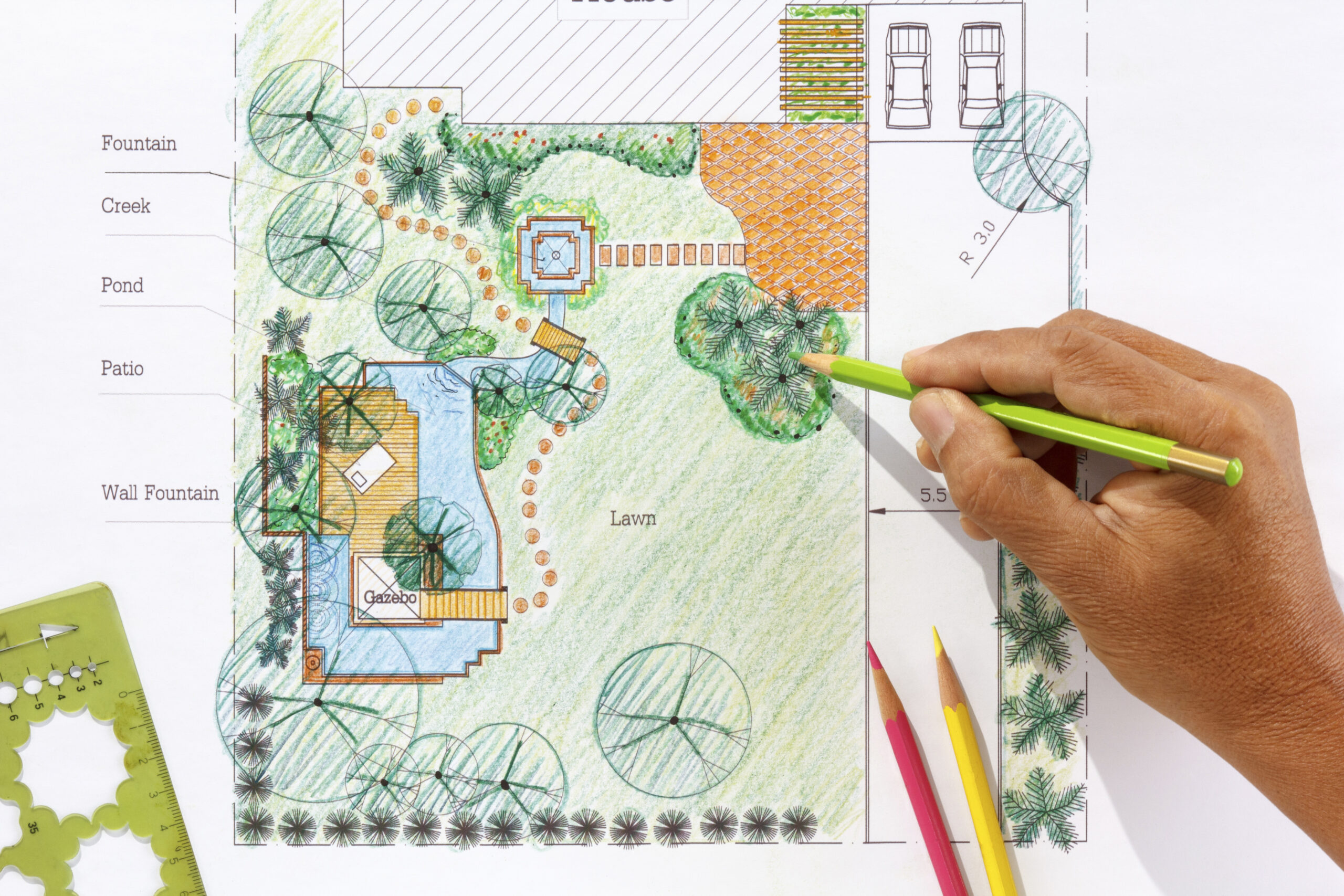
Choosing the Perfect Pool Design
You’ve got a multitude of designs to consider when picking out the perfect oasis for your backyard. It’s not just about the aesthetics; it’s also about integrating features that align with your lifestyle and values.
Pool safety features and eco-friendly materials are paramount in your decision-making process.
Pool Safety Features: These are integral to any pool design, especially if you have kids or pets. Consider fencing options, alarm systems, slip-resistant surfaces, and depth indicators.
Eco-Friendly Materials: Think about the environment as well as your health when choosing materials. Opt for sustainable woods, recycled glass tiles, or natural stone finishes.
Design Aesthetic: Lastly, don’t forget to make it visually appealing! From infinity pools to lagoon-style retreats – the choice is yours!
Remember that every feature you choose should serve a purpose while also reflecting your style and values. With all these factors in mind, you’ll be able to create an oasis that is safe for everyone who uses it while showcasing eco-friendly practices that contribute positively to the environment around us all!
Planning Stage of Your Pool Construction
You’re now in the thrilling planning stage of your pool construction. This is where design decisions and budget considerations become paramount. It’s here that you’ll determine how to balance aesthetics and functionality within your financial constraints. Remember, smart choices now will pay off as you transform your vision into a tangible oasis.
Design Decisions
We’ll need to consider several factors when making design decisions for the pool. Color selection and material choices are essential aspects that you can’t overlook. They will determine not only your pool’s aesthetics but also its durability and maintenance needs.
Here’s a quick guide:
| Factor | Considerations | Examples |
| Color Selection | Think about the mood you want to set, safety considerations, and how it blends with your backyard | Deep blue for calmness, white for visibility |
| Material Choices | Consider durability, cost, installation time, and appearance | Concrete for durability, vinyl for cost-effectiveness |
| Design Shape | It should match your home’s style and meet your family’s needs. | Rectangular for laps, freeform for fun |
Remember this: Your decision now will impact your enjoyment later on. So take some time to make these crucial decisions!
Budget Considerations
It’s necessary to factor in all potential costs when setting a budget for the project. Financial planning forms an integral part of this process. You need to ensure that your cost estimations are accurate and comprehensive, covering everything from materials and labor to permits and contingencies.
By developing a detailed financial plan, you’re not just avoiding unexpected expenses but also ensuring that your project stays on track. Don’t shy away from seeking professional help if you’re unsure about any aspect of your cost estimations.
Preparing the Site for Pool Installation
You’ve got your pool vision, but before you can dive into construction, there’s some groundwork that needs to be done. That’s where the importance of site assessment and clearance comes in, ensuring any obstacles are removed and a clear path is laid out for your dream pool.
We’ll also delve into various ground leveling techniques because getting a level base is critical to the success of your project.
Site Assessment and Clearance”
Before any actual construction begins, there’s a need for careful site assessment and clearance to ensure the ground is suitable for pool installation. You can’t just dive in; you’ve got to follow certain steps.
1. Soil Testing Procedures: This involves examining the type and composition of your soil. It’s essential because different soils react differently when under pressure or exposed to water.
2. Site Clearance: Remove any unwanted material like rocks, debris, or vegetation that could interfere with your pool installation.
3. Permit Acquisition: Don’t forget this crucial step! You’ll need relevant permits before beginning construction work on your property.
Ground Leveling Techniques
So, you’ve completed the site assessment and clearance. Now it’s time to dive into ground leveling techniques. Understanding your soil composition is key here. Different soils require specific handling for optimal pool construction.
Sandy soil might shift under weight while clay can hold water causing potential issues down the line. Don’t worry though, there are effective drainage solutions for every scenario.
Ground leveling isn’t just about making a flat surface; it involves creating a stable foundation for your pool. You wouldn’t want all your hard work to sink or crack due to poorly prepared ground! So take some time, test your soil, and plan out the best approach based on those results.
Remember: good groundwork will pay off in the long run with a solidly constructed swimming pool that’ll provide years of fun and relaxation.
Pool Framing and Plumbing Works
During the pool construction process, it’s crucial that the framing and plumbing works are done accurately to ensure a sturdy and functional swimming area. The success of your project hinges on careful plumbing materials selection and a thorough comparison of framing methods.
Start with selecting your plumbing materials. You’ve got many choices out there, but not all are created equal. PVC pipes are popular because they’re affordable, durable, and easy to work with. However, if you’re planning for an in-ground pool requiring deep excavation or if local building codes demand it, you might need to opt for sturdier material like copper.
Next is comparing framing methods. Steel frames offer strength and durability but can be more expensive than other options. On the other hand, wood frames give a natural aesthetic appeal yet require more maintenance against rotting or warping. Consider factors such as cost, longevity, and aesthetics when making your decision.
So remember: accurate framing and plumbing aren’t just about sticking pieces together-it’s about smart choices from start to finish. Take time in selecting your materials and method; after all, you’ll want this pool to last for years of enjoyment!
The Concrete and Tiling Phase
After getting the framing and plumbing done, you’re ready to dive into the concrete and tiling phase. This is where your pool begins to take shape visually, but you’ll need to nail material selection and labor management.
Choosing the right materials is essential. Concrete for durability, tiles for aesthetics – each plays a role in the longevity and look of your pool. You don’t want to skimp on quality here; this isn’t a place to cut corners. It’s wise to research available options thoroughly or consult with professionals before making decisions.
Labor management comes in next. You’ve got a team working for you, so it’s crucial you keep everyone focused and efficient. Set clear tasks, deadlines, and make sure everyone understands their role in bringing your vision alive.
You might face hiccups like weather delays or material shortages, but effective labor management can cushion those blows by adjusting schedules or reallocating resources as necessary.
Remember – patience is key during this phase. It may seem slow-paced compared with previous stages but remember that good things take time! Before long, you’ll see your dream pool taking form right before your eyes!
Finishing Touches: Lighting and Landscaping
Now that the concrete has set and your tiles are in place, let’s illuminate the beauty of your pool. The finishing touches are pivotal to enhance lighting aesthetics and ensure easy landscape maintenance.
Lighting sets the ambiance for those twilight swims or late-night parties. Your options range from simple underwater lights to complex systems that can change colors, creating a mesmerizing show.
Here are some popular lighting choices:
| Type | Pros | Cons |
| LED Lights | Energy-efficient; Long lifespan; Variety of colors | Installation can be costly |
| Fiber Optic Lights | No electricity near water; Endless color options; Easy installation | Bulbs have shorter lifespan |
| Incandescent Lights | More affordable upfront cost | Use more energy; Limited color options |
Incorporating landscaping into your pool area not only beautifies but also promotes easier maintenance. Choose plants that don’t shed leaves often, reducing pool cleaning tasks. Consider how much sun or shade each plant needs, balancing aesthetic appeal with practicality.
This phase is where you see your dream pool come to life! Lighting aesthetics combined with well-planned landscaping create an oasis sure to impress everyone who sees it.
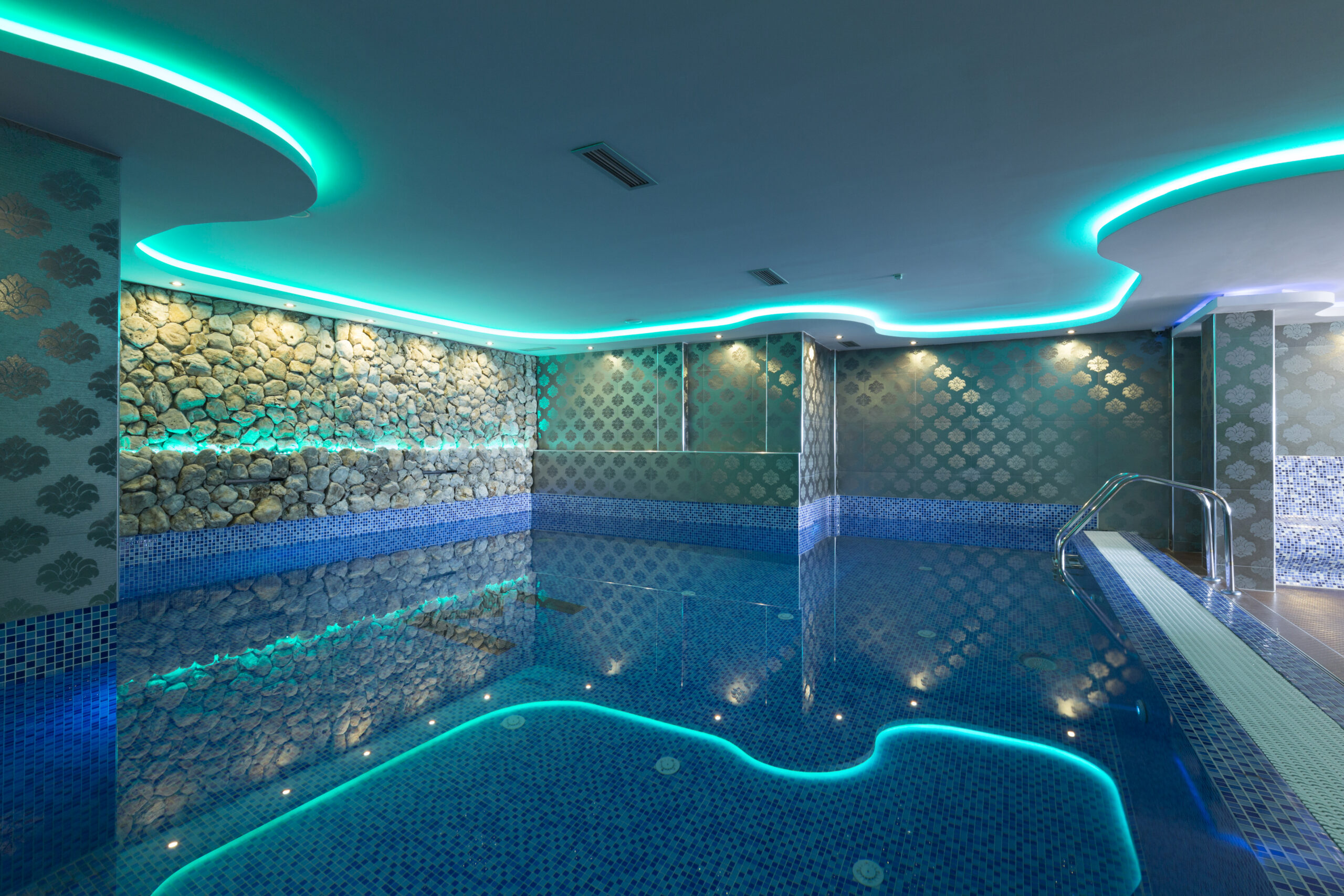
Maintaining Your New Pool: Tips and Advice
You’ve got your oasis set up perfectly, but there’s still some work to do in terms of maintenance to keep it pristine and inviting. Pool chemicals balance and energy efficient pool equipment are crucial aspects you can’t overlook.
Here are some tips on maintaining your new pool:
* Maintain the right chemical balance:
* Regularly testing your water is essential. You need to ensure that the pH, chlorine, and alkalinity levels are all balanced.
* Don’t neglect shock treatments. They help eliminate bacteria buildup.
* Use energy-efficient pool equipment:
* Opt for variable-speed pumps instead of single-speed ones. They’re more energy-efficient and will save you money in the long run.
* Consider a solar cover for your pool. It reduces water evaporation and helps maintain heat, saving both water and energy.
Frequently Asked Questions
What Is the Average Cost of Pool Construction?
The average cost of pool construction varies widely. You’ll need to consider financing options and contractor selection to get an accurate estimate. It’s not a one-size-fits-all answer, but it typically runs between $28,000 to $55,000.
How Long Does the Pool Construction Process Usually Take?
Typically, you’d find the pool construction process taking anywhere from 8 to 12 weeks. This includes permit acquisition and considers seasonal factors that could slow down the work or speed it up.
What Are the Different Types of Pool Materials Available and Their Pros and Cons?
You’ve got options like concrete, vinyl, and fiberglass for pool materials. Concrete’s durable but costly. Vinyl’s affordable yet less durable. Fiberglass is eco-friendly and easy to maintain, though it offers fewer design choices.
Can I Choose a Custom Shape for My Pool or Am I Limited to Standard Designs?
Absolutely, you can choose a custom shape for your pool. You’re not limited to standard designs. Consider pool lighting options and surrounding landscape possibilities to enhance the overall aesthetic of your customized pool.
What Are the Safety Measures to Consider During the Pool Construction Process?
In pool construction, you must consider safety measures like equipment handling protocols and emergency procedures. It’s crucial you’re prepared for potential mishaps and ensure all machinery is operated correctly to prevent accidents.

